The medieval cloisters moved stone-by-stone to Manhattan, thanks to the infinitely deep pockets of the Rockefellers
The Cloisters in New York — a part of the Metropolitan Museum of Art — is one the most important museums of medieval art in the world — yet it could only have been created in 1930s America, as Jeremy Musson discovers.
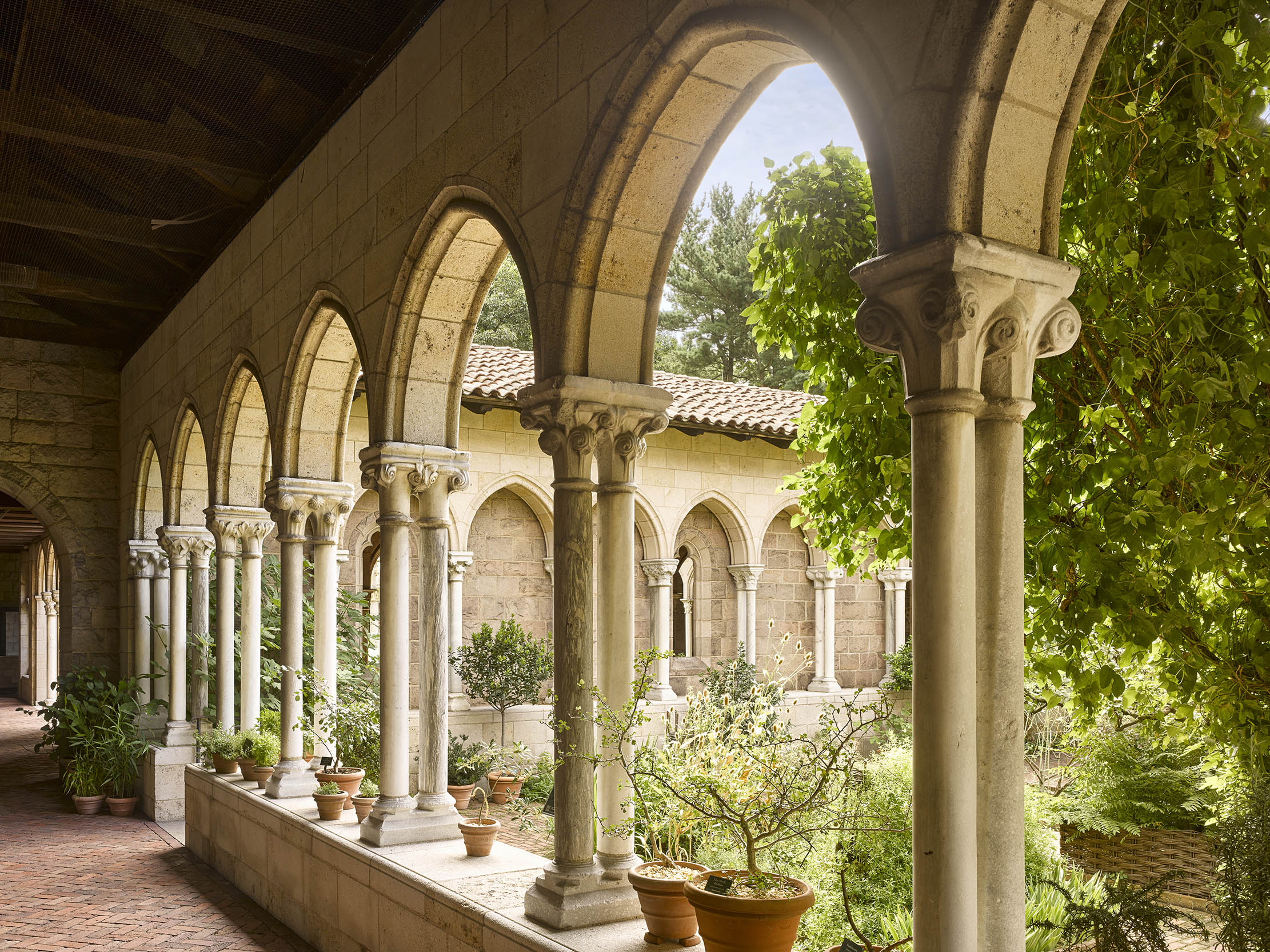
The Cloisters is an outpost of New York’s Metropolitan Museum of Art (‘the Met’) that sits in Fort Tryon Park, on the northern end of Manhattan Island in the US. There is nothing quite like the building, which was begun in 1935 and is still one of the world’s most memorable museums. It displays European medieval artworks, carvings, stained glass, tapestry, metalwork, earthenware and manuscripts in an immersive architectural evocation of the Middle Ages that could only have been designed in 1930s America (Fig 1).
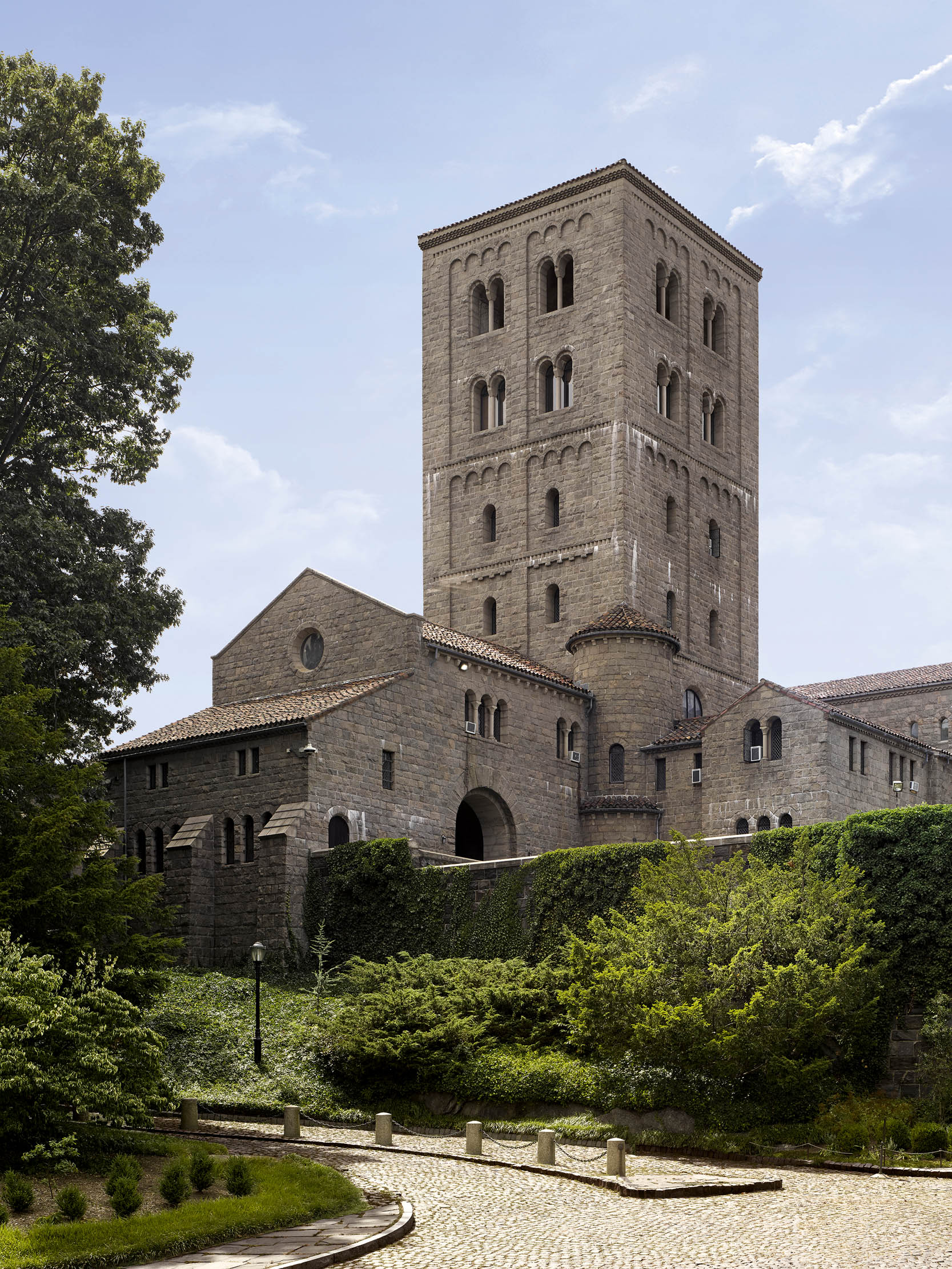
Timothy B. Husband’s Creating The Cloisters (2013) offers an authoritative history of this remarkable building, which reassembles sections of four medieval cloisters, a chapter house (Fig 4) and a Romanesque chapel to create a series of halls, courts and enclosed green gardens. Entering the museum, visitors embark on a progress through Romanesque and early- to late-Gothic architecture.
The design and construction of the building in its park setting were funded by John D. Rockefeller Jnr (d.1960), one of the foremost philanthropists of the 20th century, who gave away more than $537 million to such diverse undertakings as the National Parks service and Colonial Williamsburg in Virginia, as well as, in France, the restoration of Versailles, Fontainebleau and the cathedral at Reims after the First World War. The Cloisters alone received about $16 million.
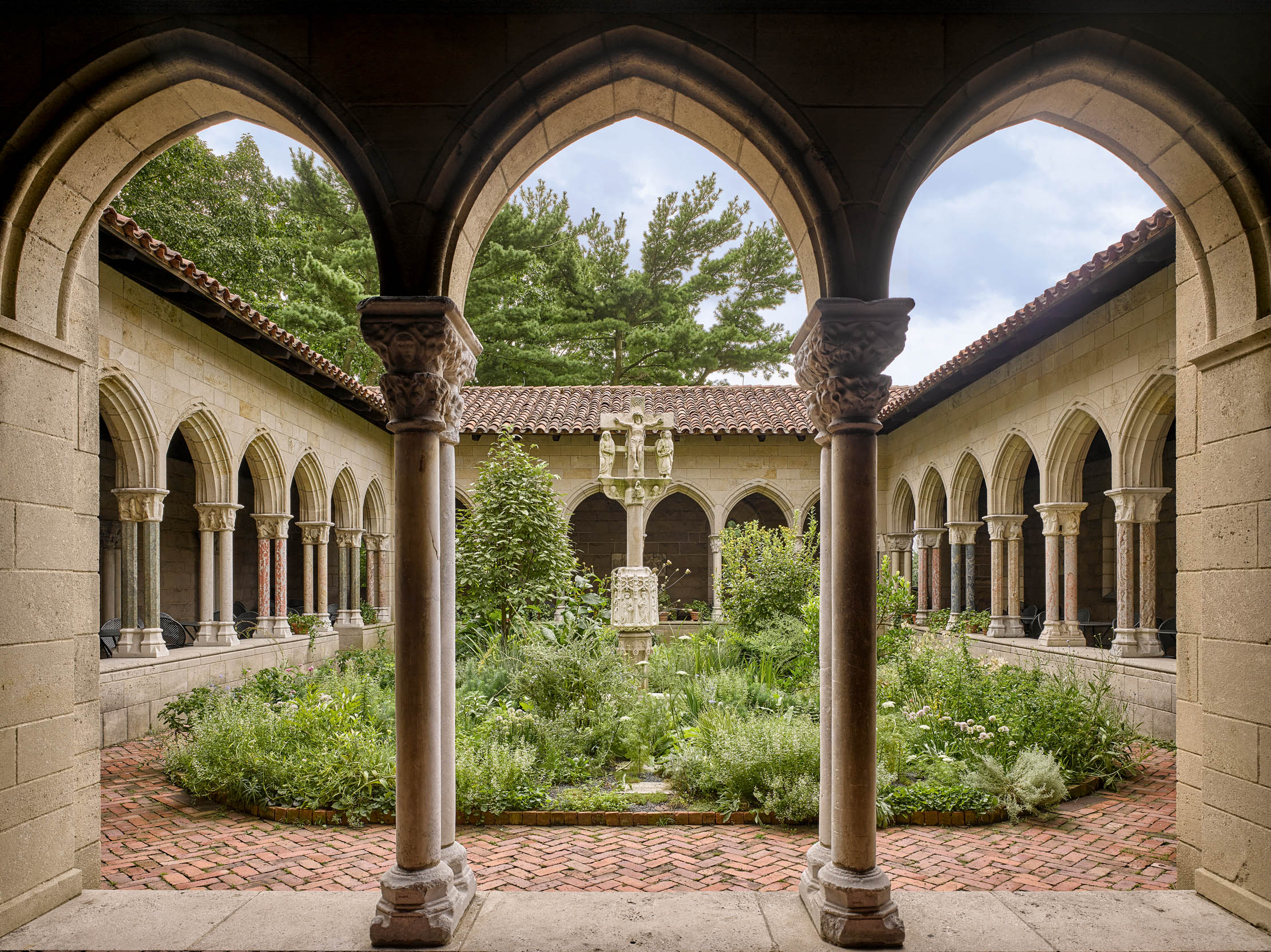
Created to transport the visitor into the Middle Ages, The Cloisters also recalls the shifts in American identity during the 1930s, evoking cultural links with Europe, the triangulation of America’s business confidence and wealth against the backdrop of the Great Depression. Rockefeller’s investment was made with a distinct view of the benefit of art to wider society; it was shaped by the ambition of American artists trained in Paris and by historicist designers who drew on European models to transform institutional and educational foundations across the US.
Rockefeller’s speech at The Cloisters’ opening, in May 1938, emphasised beauty as ‘one of the great spiritual and inspirational forces of life’. He wanted visitors to be inspired and to ‘go out to face life with new courage and restored faith because of the peace, the calm, the loveliness they have found here’.
"Rockefeller had no special interest in medieval art, but he was encouraged to trust Barnard’s aesthetic sense. He bought the lot"
The sculptor George Grey Barnard, who had trained at the École Nationale Supérieure des Beaux-Arts in Paris, played a key role in the germ of the idea of The Cloisters. He was introduced to Rockefeller by Beaux-Arts-trained architect William Welles Bosworth, who commissioned a fountain from Barnard for the grounds of the Rockefellers’ home overlooking the Hudson. Bosworth designed the 1916 neo-Classical campus for the Massachusetts Institute of Technology (MIT) and, in 1924, he moved to Paris to run the ‘Comité Franco-Américain pour la restauration des Monuments’, overseeing Rockefeller’s funding of post-war restoration work.
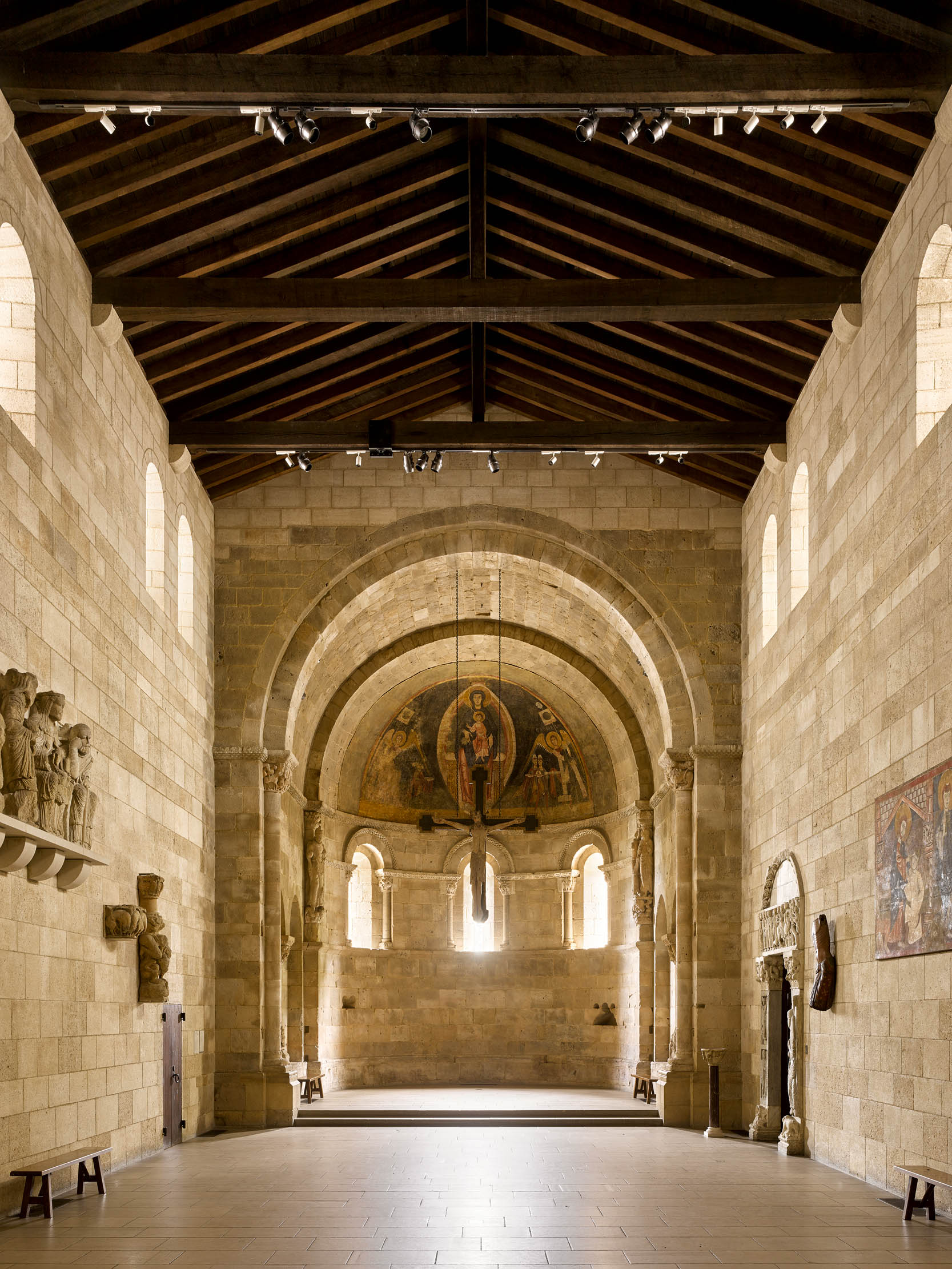
The Cloisters project could be traced to when Barnard, living in France between 1905 and 1913, began acquiring fragments of medieval architecture, with a view to selling them to collectors, such as Isabella Stewart Gardner, and the Metropolitan Museum in New York.
Exquisite houses, the beauty of Nature, and how to get the most from your life, straight to your inbox.
Most of his purchases came from dealers and, in 1906, L. Cornillon of Paris and Antoine Lambrigot of Carcassone sold him parts of the early-13th-century cloister of St Guilhem-le-Désert, Occitanie. By early 1907, Barnard had acquired three more substantial parts of medieval cloisters, one from Trie-sur-Baïse (Fig 2) and another he believed came from the Cistercian abbey of Bonnefont-en-Comminges — actually from the Franciscan monastery at Tarbes. In 1923, René Albert Gimpel noted of Barnard that he was ‘an excellent American sculptor’, who is ‘very much engrossed in carving himself a fortune out of the trade in works of art’.
His architectural buying spree nearly came unstuck with the acquisitions of parts of the 12th-century cloister of St Michel-de-Cuxa, near Prades. This, as had so many monasteries, had closed during the French Revolution and remained in disrepair until it was reoccupied and refounded as a Cistercian house in 1919. At that point, the cloisters had already been divided up and sold to private owners.
Barnard’s purchase of one section of the cloister (which had already been relocated to a private garden) in 1907 was challenged by the French authorities and he cannily presented it to the French nation, at the same time making sure his earlier acquisitions were shipped to the US. As he wrote in a letter to his wife, ‘they just got out in the nick of time’. A different attitude would prevail now.
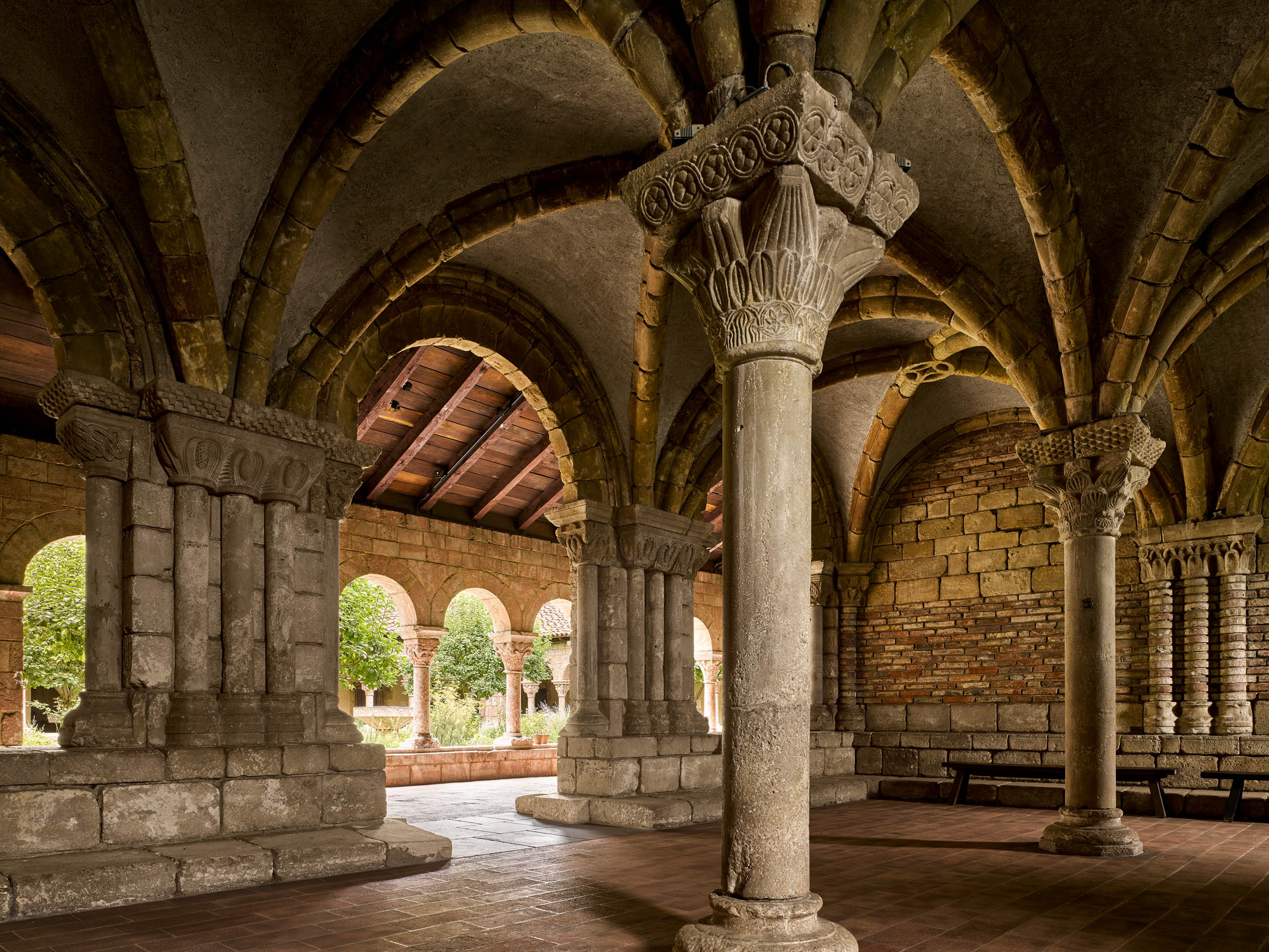
The fragments made an early US appearance within a theatrical ‘cloister museum’ on Barnard’s property on Fort Washington Avenue (not far from The Cloisters). Having undertaken a lucrative engagement as adviser on a European art-buying trip, he was able to furnish his museum with 120 crates of ‘valuable and choice things’ that arrived from Paris in January 1914. By the end of that year, Barnard opened his museum to the public, and began to change American attitudes to ‘the spirit of Gothic’.
He liked to show his visually enticing ensemble by candlelight in a church-like atmosphere, enhanced by patinated walls. Natural light was diffused by fabrics. Barnard wrote in his guide that the display illustrated the ‘spirit of the Christian religion’ in the 13th century, a time when it ‘pushed upward and outward like a winged angel in its flight from earth’.
In April 1916, Barnard, was again in need of funds and he wrote to Rockefeller offering to sell him ‘one hundred Gothic objects’ to create a unique and sacred place of beauty and peace. He suggested a plot of land near his own studio that could be ‘as separate as an island’. He did not mention that a substantial number of the objects were actually in the hands of a Paris dealer. Although Rockefeller had no special interest in medieval art, he was encouraged by his adviser, Bosworth, to trust Barnard’s aesthetic sense. He bought the lot.
At first, the items languished in a store on the Rockefellers’ country estate; some pieces, such as the portal of the Château de La Roche-Gençay, were installed in the garden there. In 1922, Barnard drew Rockefeller’s attention to the famous ‘Unicorn Tapestries’ (made in about 1495–1505), then being shown in the Anderson Galleries in New York. Barnard described them as ‘the most beautiful and rare Gothic tapestries in existence’, adding that there was ‘nothing equal to them in the Louvre’.
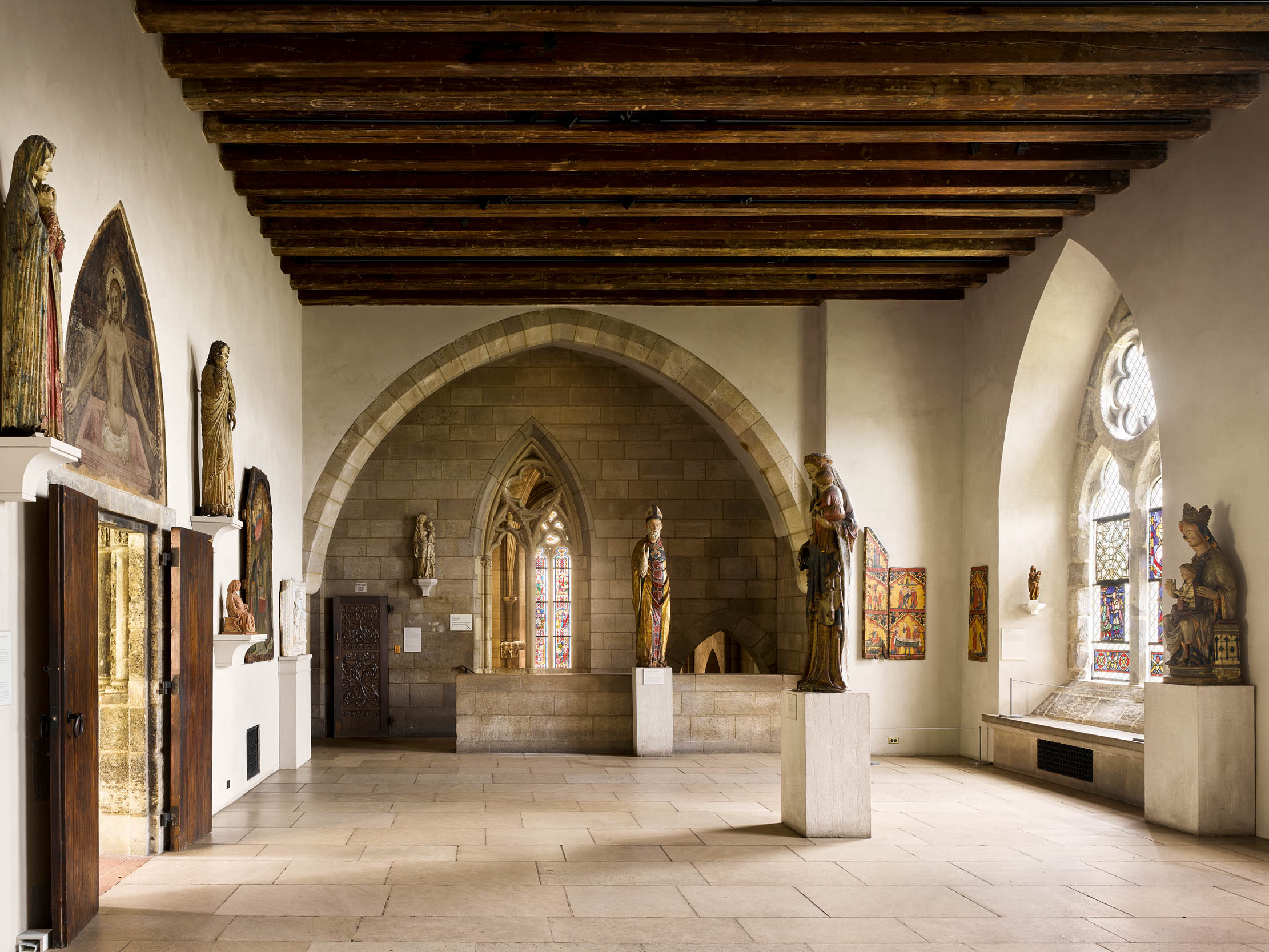
Rockefeller bought them for $1.1 million, afterwards displaying them in his house at 10–12 West 54th Street. In 1925, Barnard wished to sell the rest of his collection of medieval sculpture and architecture. Rockefeller first ascertained that it would be welcomed by the Met, then offered to buy it on the museum’s behalf. After some awkward horse-trading by Barnard, the sale was made.
Joseph Breck, the Met’s curator of decorative arts, became the first curator of The Cloisters. Given how far removed Barnard’s approach had been to that of a museum professional, he was initially alarmed by Breck’s approach. The introduction of electricity, for example, provoked him to complain that his carefully staged display in which ‘candlelight quivered on the faces of the saints’ was lost. However, after small improvements, Barnard’s cloister-museum reopened to the public on May 3, 1926, now in the hands of the Met.
Work on the new buildings and landscape park of the museum, meanwhile, got under way. Rockefeller acquired extensive neighbouring properties on the then relatively undeveloped Washington Heights, for which Frederick Olmsted Jnr prepared a landscape design in 1930. Rockefeller also bought 700 acres on the other side of the Hudson to preserve the views, extending the area protected by J. P. Morgan in the public interest some three decades before.
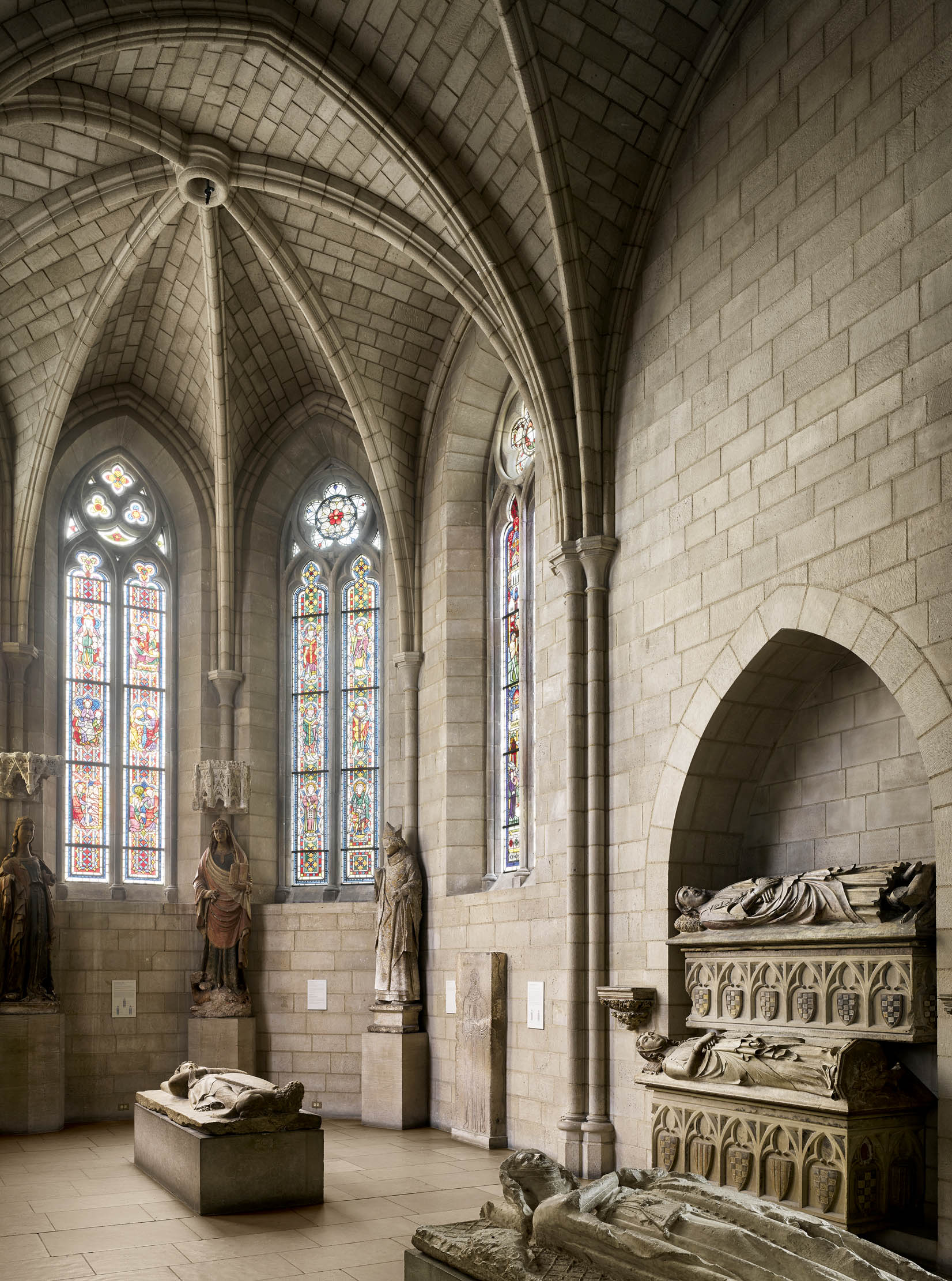
A new location for the purpose-built museum, meanwhile, was identified on the higher, northern part of the Heights, with good views over the Hudson. Rockefeller first commissioned a design for the building from John Russell Pope, whose office produced an idea inspired by Kenilworth Castle (as a young man, Rockefeller had visited on a bicycling tour of England). However, in 1931, Rockefeller dismissed Pope’s office and called in Charles Collens, of Allen & Collens Architects, a well-known Gothic Revival church architect.
In a letter to Collens, Rockerfeller reiterated that the character of the museum should be that of ‘an old fortification’. He recognised that ‘both cloisters, a chapel and other rooms or buildings would be appropriate to a fortified monastery’ and encouraged the architects to take a generous interpretation of medieval (instead of Gothic). Above all, he felt the site chosen meant that it should be ‘something picturesque and romantic in outline rather than a highly sophisticated type of building’.
The high-minded Breck laid out a logical vision for the museum’s planning, stating that ‘the visitor should be introduced to an atmosphere in which all rooms are carried out in the period of architecture characteristic of the exhibits’ (Fig 5). Collens produced plans to match this clearly worked-out vision, with a key inspiration coming from an image in a book on French architecture, showing the 12th-century church of St-Géraud de Monsempron with later additions.
In 1931, Rockefeller paid for Collens to make a European study tour of medieval architecture, during which he amassed photographs and sketches. It took in Monsempron, with its splendid Gothic chapel integrated into a Romanesque structure. The initial inspiration of the Géraud tower he found ‘too uninteresting’, so he looked to the Romanesque tower of the monastery at St Michel-de-Cuxa, near Prades, where the most significant section of cloister had come from and which became the centrepiece of the plan.
Collens artfully arranged the spaces and halls, integrating them and extrapolating new and evocative spaces. For instance, the main Cuxa cloister was rebuilt on a more extensive scale than the original, the original arcade pieced out with the new work; Collens also absorbed details from other notable medieval and Romanesque structures into his mix (Figs 6 and 7) and showed a sensitivity to the traditions from which the various fragments came.
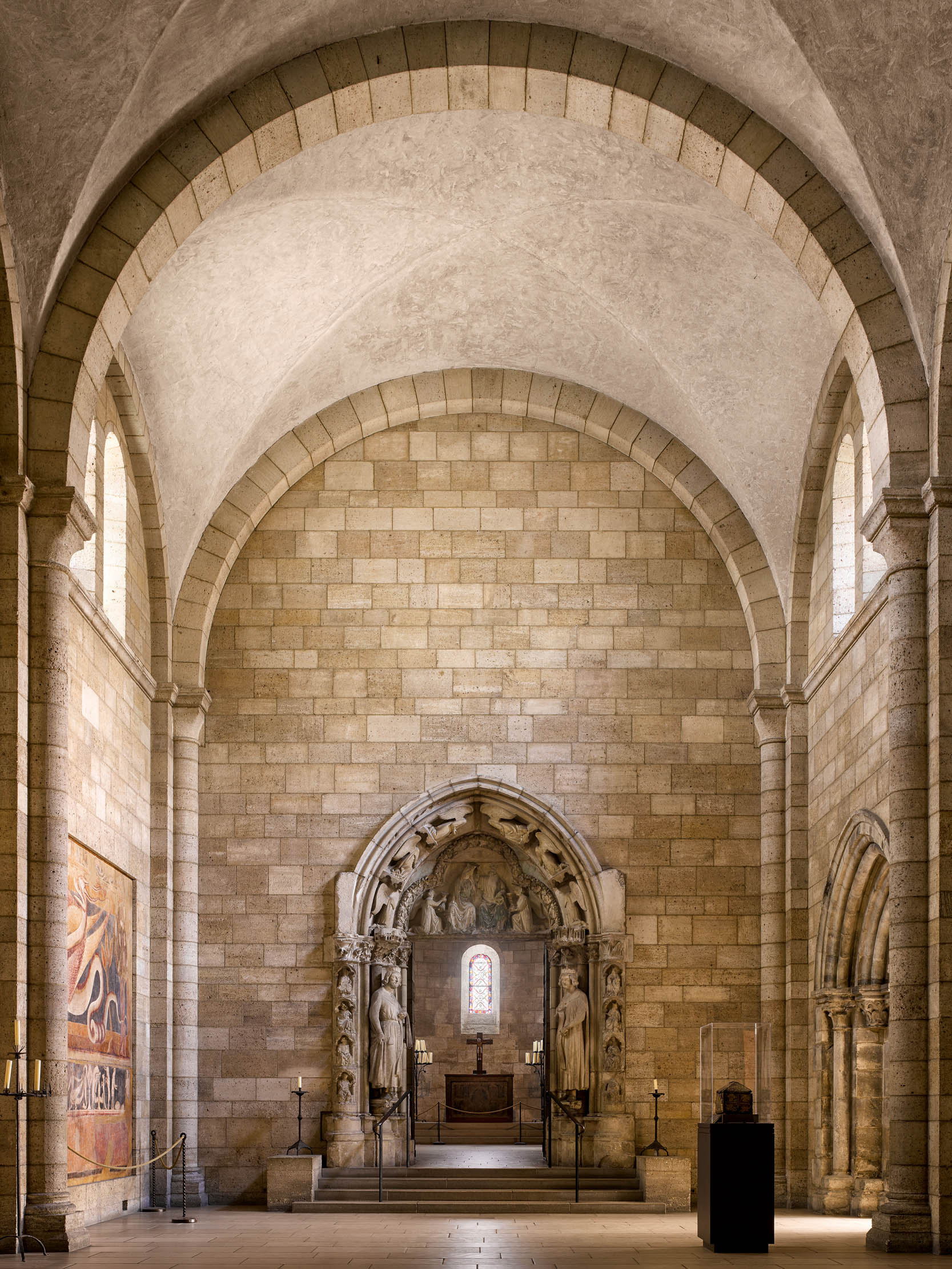
Rockefeller kept the project on the road despite the Great Depression and, in September 1931, appointed Collens the architect of the scheme, working under a Building Committee that included both Rockefeller and his son. An eighth-of-an-inch scale model was prepared for the committee.
Curator Breck played a critical role in refining the proposal, providing sketches in his own hand and ideas for the cloister gardens. The design — with Breck’s many improvements — was finally approved in May 1933. That August, travelling in Europe, Breck tragically died of a heart attack at the age of 48, but work to the new museum continued. The resulting ensemble is a historicist masterpiece in the setting of a picturesque park.
Builders Marc Eidlitz & Son created a seamless composition of old and new. Extensive ramparts, evoking Carcassone, underline the drama of the setting. Granite was quarried in New London, Connecticut, for new external work and Doria limestone from Genoa, Italy, for the interiors.
In 1935, Rockefeller agreed to donate the ‘Unicorn Tapestries’ and suggested two rooms be remodelled to receive them. The old ‘cloisters’ museum devised by Barnard was closed soon afterwards in December 1936 and the Met took control of the new building in October 1937, which then opened to the public with the collections installed in May 1938. The American architectural critic Lewis Mumford wrote in The New Yorker that it was ‘one of the most thoughtfully studied and ably executed monuments we have seen in a long time’. The French art historian Germain Bazin called it ‘the crowning achievement of American museology’.
The Cloisters has undergone important changes since its first opening. In 1948, the ‘Unicorn Tapestries’ gallery was divided to accommodate the rare late-Gothic ‘Nine Heroes’ tapestries. The loan by the Spanish government of the apse of the ruined church of San Martín, Fuentidueña (Fig 3), prompted a reconfiguration of the exhibition space that reopened in 1961. More recent updates have incorporated new technology and modern practices. All these changes, however, have respected ‘the contemplative atmosphere’ and ‘spiritual resonance’ of the original ensemble, so the magic conceived in the 1930s still prevails.
Visit www.metmuseum.org Acknowledgements: Timothy B. Husband